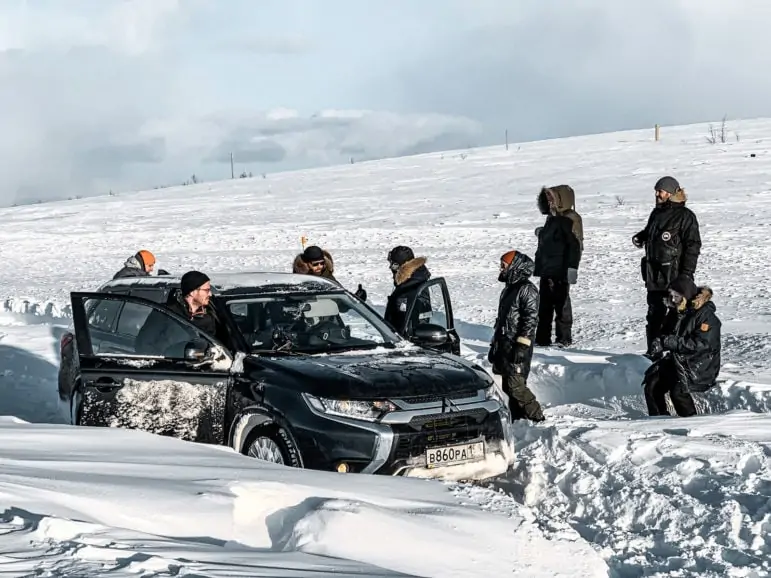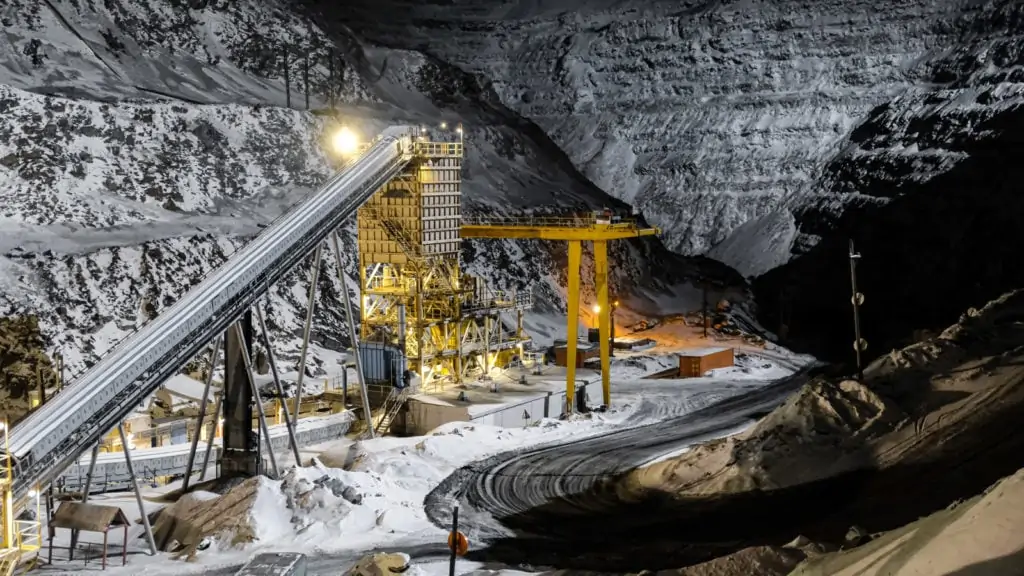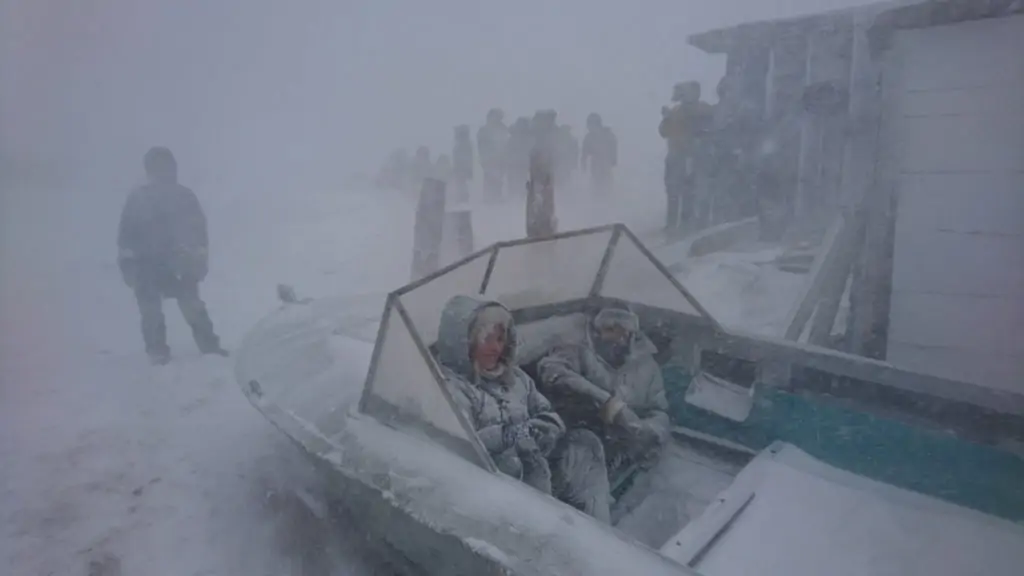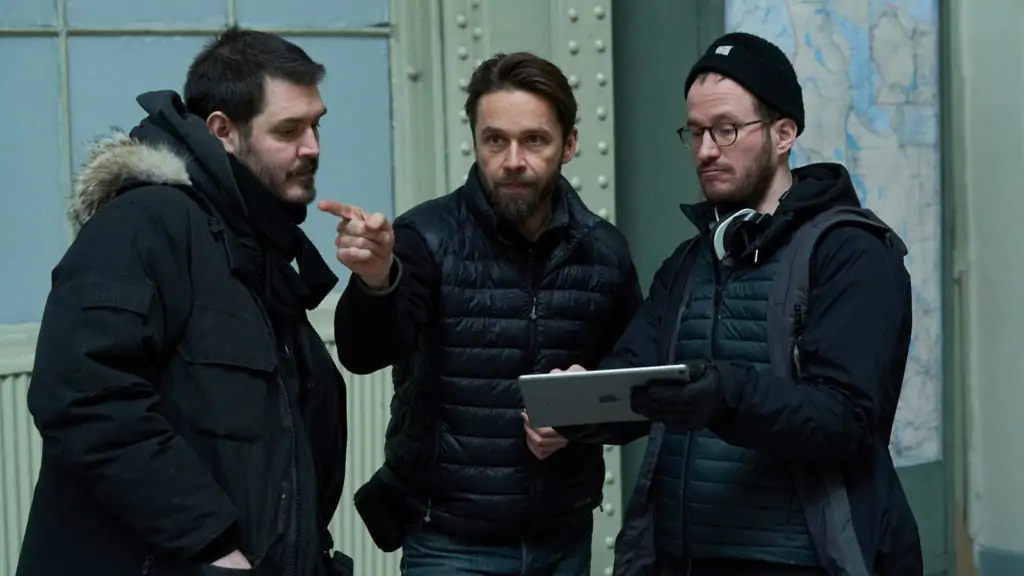SHARED JOURNEY
Compartment No. 6 is an arctic road movie and a story about connection. Like the film’s central characters, cinematographer J-P Passi FSC and writer-director Juho Kuosmanen have experienced a shared journey of discovery during their filmmaking careers.
Chemistry and connection are at the centre of the narrative as well as the filmmaking process behind Compartment No. 6. The charming tale of unlikely bonds being formed and a journey that allows the protagonists to see the world in a new light was selected to compete for the Palme d’Or at this year’s Cannes Film Festival and shared the Grand Prix award with Asghar Farhadi’s A Hero.

Based on Rosa Liksom’s 2011 book, first published in Finnish, the film is set in the late ‘90s and follows the intertwined lives of gentle-natured Finnish student Laura (Seidi Haarla) – who is travelling from Moscow to Murmansk in Russia’s remote north-west to see the ancient petroglyph rock drawings – and loutish, drunk Russian mine worker Ljoha (Yuriy Borisov). After their paths cross when they share the same compartment on a lengthy train journey, the strangers’ initially icy relationship evolves, and the unlikely compartment companions embark on a journey which will change their perspectives on life.
Like the film’s central characters, Finnish filmmakers cinematographer J-P Passi FSC and writer-director Juho Kuosmanen have experienced a shared journey of discovery, exploring a variety of forms of production and creative styles over the past two decades. “We first worked together on a music video I shot and co-directed,” says Passi. “I was looking for a camera assistant and the location manager Jussi Rantamäki, who also produced Compartment No. 6, recommended Juho. He was a first timer and didn’t know much about camera assisting but we were a good match and continued working together, releasing our first short film, which I shot and Juho directed, The Citizens, in 2008.”


The successful pairing went on to work on quirky projects such as short films projected within opera performances and black-and-white short films through to critically acclaimed films such as The Painting Sellers (2010) and black-and-white romantic comedy The Happiest Day in the Life of Olli Mäki (2016), both of which won the main prizes in their sections at Cannes.
Passi has found their evolving creative journey a liberating experience, with their latest creation being a natural progression. “From the beginning, we shot almost everything handheld. When making The Painting Seller we decided it would be 100% handheld, but when this became too difficult for some scenes we said, ‘Okay, this kind of rule sucks, let’s not have rules anymore’. From then on, we’ve been freer to do what we want, mostly shooting handheld still with a lot of moving masters and living the experiences with the people we are filming which draws on my documentary filmmaking background. Juho’s has a theatre background – I wouldn’t be surprised if that makes it natural for him to work with longer and more complicated scenes instead of just shooting the masters and collecting the needed close-ups.”

Compartment No. 6 is an arctic road movie, and according to Kuosmanen, perhaps it could be seen as an “attempt to find harmony and peace of mind in a world of chaos and anxiety”. He elaborates: “Road movies are often about freedom. In a car you can go where you want, every crossroad is a possibility. But I tend to think that freedom isn’t an endless number of options but rather, the ability to accept your limitations. A train ride is more like a destiny. You can’t decide where to go, you just have to take what it gives you.”
In the book the story unfolds in multiple directions, but when working on the film adaptation Kuosmanen needed to decide which direction to take. “When I finished the book, I felt it was too hard to adapt, but then I met the book’s author, Rosa Liksom, at an event, and we talked about a possible adaptation.”
After sharing his thoughts and doubts, Liksom said Kuosmanen was free to do whatever he wanted with the book. “So, the final film is more inspired by, rather than based on, Rosa Liksom’s novel. After location scouting and casting, everything changed once again. We took big steps away from the texts. We changed the route, the decade and with that, the country changed from the Soviet Union to Russia. We changed the age of the male character, and we even changed his name from Vadim to Ljoha.”

Achieving the impossible
Not afraid of a challenge, Kuosmanen is drawn to ambitious projects that put filmmakers to the test. “Juho seems to like these impossible ideas. The last time he came to me with the idea of shooting The Happiest Day in the Life of Olli Mäki – a black-and-white film about a boxer,” says Passi. “I panicked because so many films in that genre are classics and it’s hard to compete, but we succeeded in achieving what we set out to do and the film was well received. After that, I’ve tried to avoid questioning his decisions and ideas so much.”
However, when Kuosmanen presented Passi with Compartment No. 6, the Finnish cinematographer confesses he was initially daunted by the task of bringing a book that was so beloved in Finland to life on the big screen. “Other challenges included the practical side of shooting inside a Russian train and finding crew and people to film over there when our Russian is almost non-existent.”
After initially considering shooting the large number of train-based scenes in a studio, the decision was made to shoot the majority in real trains and some scenes inside a hangar. “Facing challenges such as these is a great thing. Often filmmakers can be too safe, myself included, but when working with this team it feels like we can take risks and conquer challenges,” says Passi. “Choosing to shoot with 35mm film camera made this production even more interesting to navigate when in confined spaces, especially when moving a lot with the camera inside the moving train or shooting with very narrow track and a lightweight dolly when we weren’t filming handheld, with a tripod or Steadicam.”


Kuosmanen admits it seemed “a much better idea on paper than in practice”. “Sound was recorded with hidden microphones, the crew was really small, and everything was slow as hell. There was not enough oxygen in those cramped spaces and the smells were terrible,” he says. “But in the end, I’m thankful to each one of our crew that we did it in this intimate way. I think we managed to capture something special. There is real life in those images.”
Kuosmanen and Passi’s choice of format was fundamental in the overall look of the film. No matter how small or how low budget the production is, they have always shot on film. “So, our first question was should we shoot Super 16 or Super 35. And once we had decided on 35mm, then should we go for 2- or 3-perf? I thought it should be 2-perf 35mm because it’s only a little bit bigger than 16, so it’s still intimate, but it’s less grainy, and we could stabilise a bit more if needed. It’s also a bit cheaper which didn’t harm us.”
Passi enjoys the experience of shooting on film partly because it is more malleable. “There is physical material capturing the images and I think the crew has more of an appreciation of the work because of the honoured format. Everyone is really concentrated, and you really need to rehearse to ensure the timing is right and you can achieve the results in minimal takes, especially with a film like this with so many complicated movements and moving masters. The look and feel of film are also so unique. Obviously I’ve seen and shot some nice digital material imitating film, but it takes a lot to make it come close enough. I enjoy the random factor when shooting on film – there are always surprises and that means there is still that magic in the process.”


Having tested a variety of film stocks, the decision was made to shoot on Kodak Vision3 500T 5219. “Originally we considered shooting with two stocks but due to the logistics and remote locations we opted for one as we would also be doing a lot of push processing and we knew the 5219 was a safe choice and could deliver the results needed,” he says.
Shooting a large part of the film in dark train compartments and other low-light situations with a small lighting crew and limited lighting gear meant a fast lens with moderate flare was essential. The Zeiss Super Speeds were “perfect for such locations and allowed the required shots to be most easily achieved.” Size was a key factor during camera selection. “It had to be as small as a 35mm camera could be and 2-perf, so we went with the Arricam LT, supplied by ARRI Berlin as there were no 2-perf cameras available in Russia.”
Discussions also concentrated on how best to incorporate colour. From reading the script, it was clear that in the beginning of the film space would be restricted in train corridors, compartments, and toilets. “I adopted a warmer tone for these sequences. We then created a cooler look as the characters reach different locations and move outside the train where they can see more of the environment and breathe more easily,” Passi says.

Shooting approaches
During pre-production certain films the pair watched demonstrated how not to capture confined spaces such as train carriages. “Some productions used very long lenses and shot from two metres outside the window which just made no sense to us,” says Passi. “We knew the lens had to be inside the compartment, even if the back of the camera might be outside the door. We wanted to create a feeling of being there with the characters which couldn’t be achieved if shooting from too far away.”
Adopting this approach meant no walls were removed from the train carriages, apart from the wall in the toilet and the phone booth because the area was too small for a scene which required the characters to fit inside the space along with the camera. Russian crime drama Brother (1997) was a valuable reference, focusing on a similar period to the one Compartment No. 6 is set in. “We studied the production design and filmmakers’ realism in particular. While it had nothing to do with trains, it was still relevant in its style and era.”

They also referred to photos of Moscow taken in 2000 by Czech friend and Karlovy Vary selector, Lenka Tyrpakova. “I often feel photographs are a better reference in terms of atmosphere, whereas film is such a vast entity,” says Passi. “Our production designer Kari Kankaanpää, who we worked with on The Happiest Day in the Life of Olli Mäki, had such a great local crew and they helped create a realistic period feel through thorough research and outstanding ideas and designs.”
To gather research and determine where each scene would be best captured during the characters’ journey between Moscow and Teriberka, Passi and Kuosmanen spent two months location scouting and prepping in Russia the year prior to the shoot. They then shot from early February 2020 until late March, just as the pandemic began. “Along the route we also shot in St Petersburg and Petrozavodsk, starting with the train scenes – which make up about a third of the film – in the traveling train, before shooting the majority of the night train scenes at a train depot in St Petersburg with a real train before working pretty chronologically along the route. The waggon was inside a hangar which we treated like a studio to shoot the night scenes, using moving lights, artificial snow, smoke, and wind. The SFX team also built a hydraulic contraption that shook the train to create the effect of movement.”
As the crew was unable to shoot the opening party scenes in Moscow because the area was in lockdown, these sequences were also filmed in St Petersburg. While working around the restrictions the pandemic placed was a challenge, other unpredictable obstacles arose and when filming the later scenes in Teriberka the filmmakers had to contend with a snowstorm. “That scene was never planned that way – we had to adapt quickly. It was such an adrenaline rush and I’m so pleased with the results as the snowstorm adding something uplifting. Luckily that was one of our two Steadicam days, and it was just the perfect tool to capture it,” says Passi. “Those are the most wonderful parts of filmmaking. If it was all about planning and execution it wouldn’t be as thrilling. The random elements are what keeps filmmakers excited and motivated.”

A shared goal
Lighting had to feel natural and Passi needed to know the motivation for the lights used in every scene. “For me, it’s difficult to place lights in illogical places. In the beginning, when we first enter the compartment, the lighting is real available daylight mixed with fluorescent tubes that are dirty, green, and almost ugly,” Passi says. “As we go deeper into the story and night falls, the interior light becomes warmer from bulbs on the wall and there is not much light from outside. The scenes in the huge open mine were completely dark and we were shooting at night, so we needed two 18K Arrimax on cherry pickers to have at least some exposure.”
Working with gaffer Roman Gafari simplified the process. “He’s so experienced and helped me a lot, from extending the existing warm practicals with small LEDs to figuring out and executing some bigger and complicated lighting rigs. We used everything from small, dirty coloured LEDs and SkyPanels through to 18Ks and Dinos.”


For one scene where Laura is in a phone booth, four 12K Dinos on cherry pickers lit the square outside. As the existing LED lights in the square were too modern for the period film they were replaced with tungsten. “We used LEDs if needed, but whenever possible, it was all lit by bulbs, fluorescents or more classic traditional film lights,” he says. “It felt wrong to use energy-saving or LED bulbs in a film taking place 20 years ago.”
The Russian word for cosy – uyutnyy (уютный) – was significant whilst making lighting and production design decisions, during the grade and all the way through to processing which was carried out at Mosfilm in Moscow and Studio l’Equipe in Brussels. “We were always pushing for this feeling. Everything should feel warm and soft, especially the skin tones and in the train carriage where there are warm practicals. Although the mood in the compartment changes during the journey the story revolves around the characters, so they were key,” says Passi. “We discussed our goals with freelance colourist Sandra Klass – with whom we grade at Rotor Film in Potsdam, Germany – along with how to capture colours such as dark greens and dark browns to create an authentic feeling of a Soviet train interior.”

Passi’s filmmaking philosophy is “everything is possible if you have the right people and a common goal with the director.” This was never truer than during the creation of Compartment No. 6. “If you are with the right crew, it never feels like the available resources are a problem. There is no challenge that cannot be conquered,” he says. “I had a great 1st AC Dima Zezyulya and 2nd AC/camera technician Demyan Roslyakov and excellent people in production including the Finnish main producer, our long-time collaborator and friend Jussi Rantamäki, producer Natalya Drozd and line producer Sergey Kasatov. They were such important and reliable team members, and it was a privilege to work with them. I’m also really happy that my gaffer and the ACs will be working with me on my next film in Russia.”
The shared production vision produced results that captured the attention of this year’s Cannes jury, seeing the film named joint winner of the prestigious Grand Prix award. “It was a surprise because I didn’t think a small, non-political film would win,” says Passi. “I was shooting another film when the award was given out but luckily I was in Cannes for the premiere screening when the magic happened. At the end of the film there was a 12-minute standing ovation which was just insane. It felt so wonderful to see people moved by the film and then to go on to win the award was the ultimate recognition after such an unforgettable filmmaking journey.”











